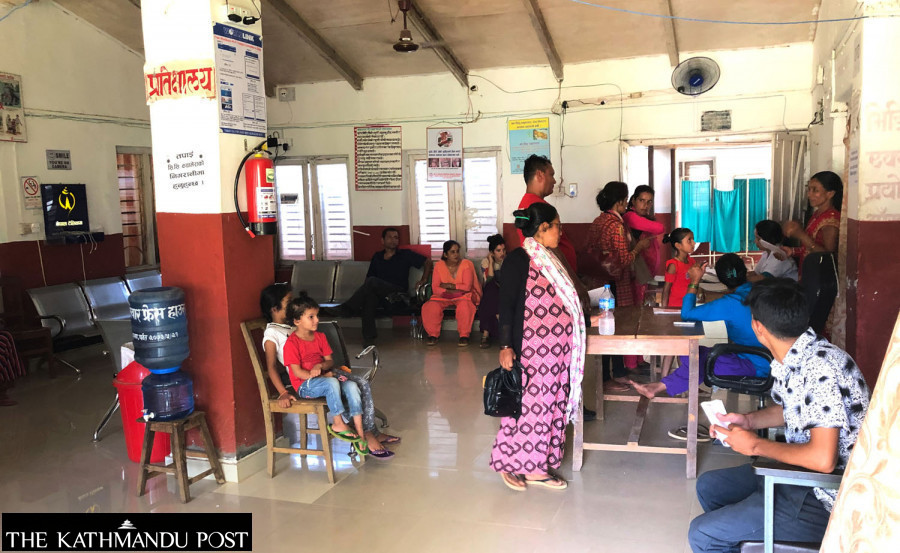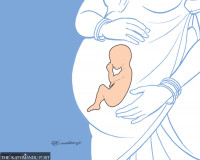Health
Rising cost of living is impacting people’s health
Cases of waterborne diseases result of inflation that is driving people into poverty, forcing many to scrimp on essentials.
Arjun Poudel
When two girls were brought to the Sukraraj Tropical and Infectious Disease Hospital last week, their condition was serious. They were diagnosed with cholera, a highly contagious bacterial disease.
The disease causes severe diarrhoea and vomiting, which causes dehydration and can lead to death within a few hours if left untreated.
The Health Department under the Kathmandu Metropolitan City has deployed officials to collect water samples from suspected contaminated sources for testing.
Officials and doctors treating the patients, who are sisters aged 18 and 23, found out that they were using tap water for drinking, switching from jar water, apparently because bottled water had become expensive.
“When they were admitted to our hospital, their condition was serious,” Dr Manisha Rawal, director at the hospital, told the Post. “They are recuperating at the intensive care unit.”
On Tuesday, two more cases of cholera were detected in Kathmandu.
Since the onset of the monsoon, sporadic cases of cholera have been reported in different parts of Kathmandu Valley raising the risk of an outbreak, warn health officials.
Hospitals treating diarrhoeal patients said there has been a rise in the number of suspected cases of cholera.
Experts say rising living costs in cities like Kathmandu have forced many people from low economic backgrounds to cut down on various consumable items, including water. At times, they have been forced to do so at the cost of their health, according to them.
“The patients infected with cholera were found to have been drinking water directly from household taps,” said Balaram Tripathi, chief of the Health Department. “Despite knowing the risks, they are forced to drink water supplied from public taps.”
Kathmandu has always been notorious when it comes to drinking water, with tap water or water supplied by tankers remaining unfit for drinking without proper treatment or boiling. Although questions have also arisen regarding the quality of bottled water, it is considered comparatively safe to drink directly without boiling.
With the rise in prices of almost every other item due to increasing prices of petroleum products, the urban poor are struggling to manage their budgets. Some people have stopped boiling the water to save energy bills.
Officials say drinking water supplied to households directly has risks. A study, carried out by the Ministry of Health and Population last year, found that around 60 percent water samples from various sources in Kathmandu Valley—including bottled water sold in the market—were found contaminated with E. coli and coliform, the microbes found in human faeces that cause diarrhoeal infection.
“It is believed that bottled war is comparatively safe but people stopped using it due to rising costs,” said Dr Sher Bahadur Pun, the chief of the Clinical research Unit at the Sukraraj Hospital. “When we ask diarrhoeal patients why they do not boil water before drinking, most of them say, because of rising costs. Daily wage workers complain that they do not have time to boil water, hence they tend to drink whatever they get at their work sites.”
Raj Kumar Nepali, 31, who lives in a squatter settlement at Sinamangal, Kathmandu said he stopped buying jar water after the prices went up recently.
“I earn around Rs12,000 per month. How can I afford bottled water?” said Nepali, who works as a labourer. “Boiling water also comes at a cost and I have been trying hard to cut costs.”
Mathura Khanal, 47, a grocer who also sells jar water at Dhobichaur, said some of her regular customers have stopped buying water after the price increased recently.
“The price has gone up by Rs10, and for working class people, this amount matters also because the cost of other household items from edible oil to milk and sugar too has risen,” said Khanal.
For urban consumers who make up 66 percent of the country's population, back-to-back price hikes in petroleum products have come as a cruel blow. Food prices, transport fares, room rents and school fees have all soared to record highs.
Constantly rising inflation is wreaking havoc on household budgets and causing anguish to the provider of the family, say experts.
According to the Nepal Rastra Bank, the year-on-year consumer price inflation jumped to a staggering 7.87 percent in May, hitting a 69-month high. It was 3.65 percent in May last year.
Further price hikes in all sectors—from retail to wholesale—are likely soon, according to insiders, and this has led mainly low income people worrying about arranging two square meals.
Namuna Rai, who resides in a rented room at Balaju, said that she has stopped buying milk for her two children after the price went up.
“I buy milk and biscuits only when my younger son cries,” said Rai, a mother of two. “My elder son understands that we do not have money, but the younger one is too young to understand such things.”
Consumer rights activists say the government has failed to intervene and take initiatives to control inflation even as people have been bitten hard by inflation.
“Doesn’t this government know about the rising prices of commodities and the plight of the consumers?” said Jyoti Baniya, chairman of the Forum for Protection of Consumer Rights-Nepal. “When the government doesn't tame market prices, people suffer.”
In a country like Nepal where government action to address the cost-of-living crisis has been minimal, there are concerns this could drive more people into poverty which will have serious consequences for public health.
Experts say the rise in cases of cholera and other other waterborne diseases is just an example of how a worsening cost of living can have a devastating impact on public health. Ensuring clean drinking water to the public is the state’s basic responsibility, they say.
While describing cholera as a threat to global health, the World Health Organization says it is also an indicator of inequality and a lack of social development.
“Many people, especially the urban poor, have been forced to drink tap water which is contaminated with pathogens,” said Dr Rajiv Shakya, an infectious disease expert at the Dhulikhel Hospital. “But what we should not forget is that those drinking jar water are also not safe, as no one knows the quality of the water.”
Meanwhile, E. coli has been found in the water used by the infected patients of Bagbazar area.
According to Basanta Adhikari, chief of the Kathmandu Health Office, all three water samples collected from the houses of the infected patients were found contaminated with pathogens.
Three water samples—two from water taps and one from tube well—were collected for testing.
“Presence of E. coli in water means it is contaminated with microbes found in human faeces,” Adhikari said. “It causes diarrhoeal problems including cholera.”
(Anup Ojha contributed reporting.)




 6.81°C Kathmandu
6.81°C Kathmandu














